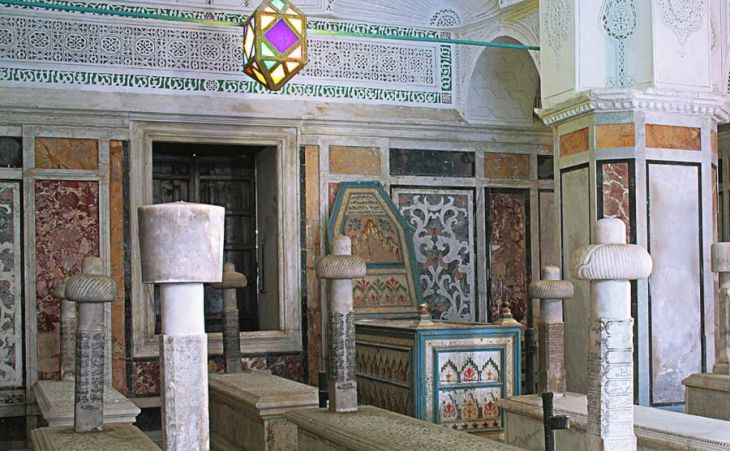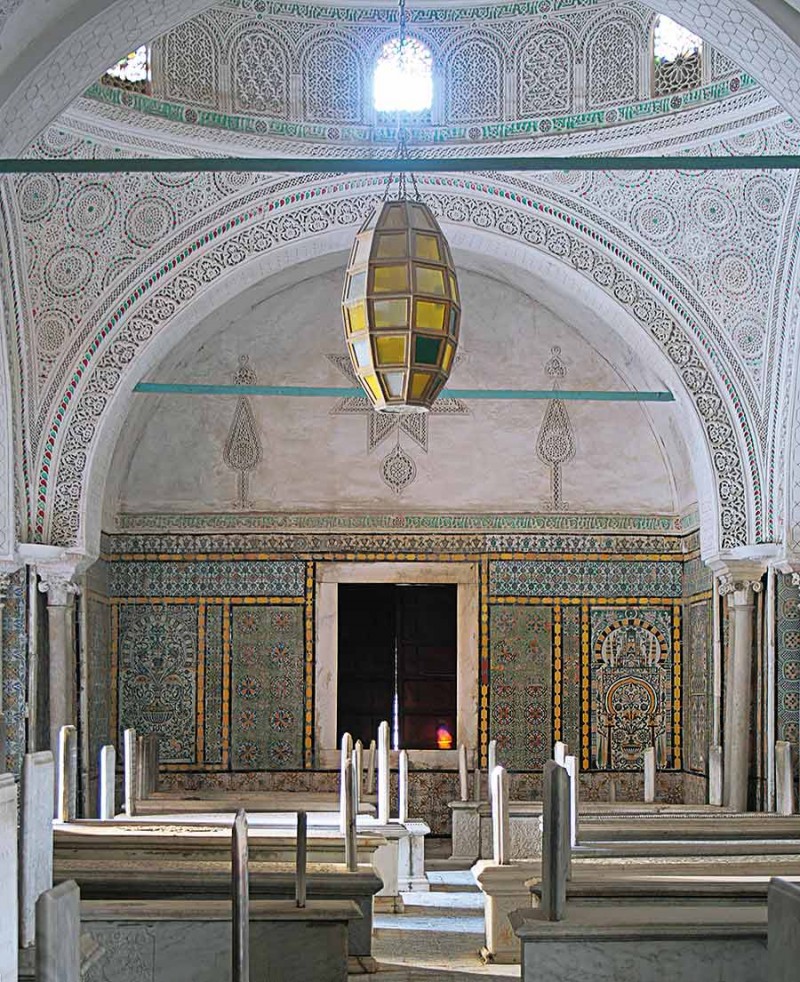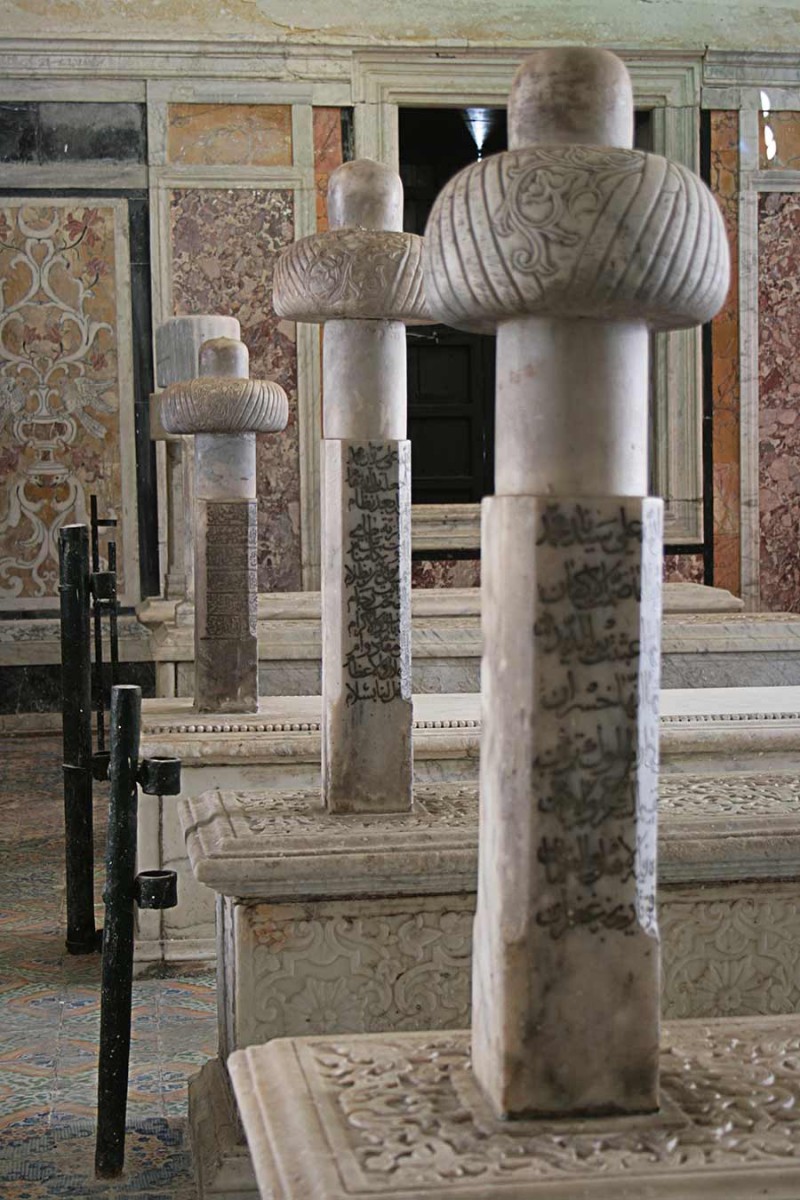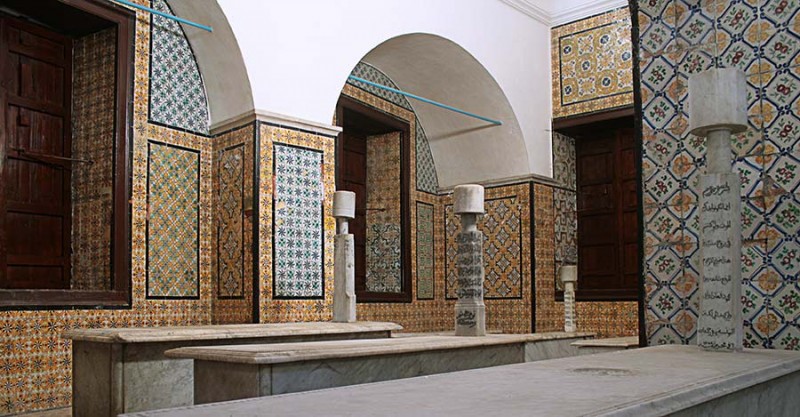It is the collective mausoleum of the last dynasty that ruled Tunisia. A monument of austere appearance, where reigns an astonishing atmosphere: marble tombs, chiseled domes, walls lined with ceramic tiles. It has just reopened after renovation.
Tourbet-el-bey means “the Bey’s turbah”. The word turbah (or, in Turkish, türbe) designates a funeral building built for a great personage. An oriental custom that developed in Ottoman Tunisia.
Tourbet el-Bey, the largest turbah in Tunis, was built by Ali Bey. It was this sovereign who, after a long period of civil war, definitively installed the Husainid dynasty founded by his father. For his throne was disputed by his cousin Ali Pasha, who came to power between 1735 and 1758.
This collective mausoleum, built a few years later, consists of eight burial chambers. Almost all the rulers of the Husainid dynasty (1705-1957) are buried here as well as many princes and princesses.
This dynasty, like the previous one (the Muradid dynasty), had allegiance to the Sultan of Istanbul. But in reality, it enjoyed a quasi sovereignty. Having accepted the French Protectorate in 1881, it was deposed after Independence.
Marble tombs and chiseled domes
In the heart of the
medina of Tunis, in the street that bears its name, the monument has soberly decorated ochre sandstone facades and
domes covered with
green glazed tiles.
Multiple domes cover the different rooms separated by two inner courtyards.
Among the most remarkable rooms is the Hall of the Princesses. The women's tombs can be recognized by the two marble slabs at their ends. On the walls are polychrome ceramic panels representing large vases with bouquets, characteristic of the art of the ceramists of Tunis in the 18th-19th centuries. Above, graceful decorations carved in the plaster of the walls and the dome.
The Hall of the Pashas
Opposite this room is the room of the Pashas - the title given to the Beys who actually reigned. This is the hall of prestige, which seems a miniature replica of the great mosques of Istanbul. Its large central dome is surrounded by cupolas, all richly decorated. Its walls are veneered with Italian-style marble inlays, and the marble tombs are entirely carved with arabesques.
As for the small columns that adorn these tombs, they reflect the change of official costume imposed by the Ottoman sultan: the oldest are topped with turbans, and the most recent with cylindrical “tarbooshes” (fez), headgear associated with the European costume that became mandatory!
Six other rooms added over the centuries complete the monument that has become a museum. A must-see in the medina of Tunis.
Other turbahs in the Medina (not visitable):
- the turbah of Ali Pasha (the other Ali of the civil war) is smaller but more luxurious, with its magnificent dome lined with stucco lace;
- the Laz turbah: it is easily noticed on the Kasbah square, with its green tile dome in the shape of a mushroom;
- the turbah of Hammouda Pacha has a superb facade in black and white marble inlay.
NB: photos taken before restoration.



